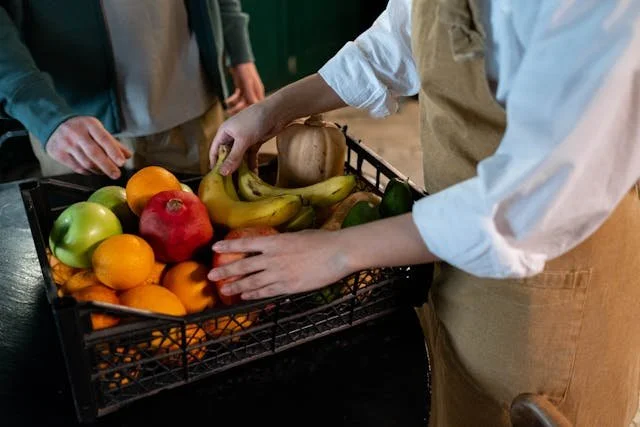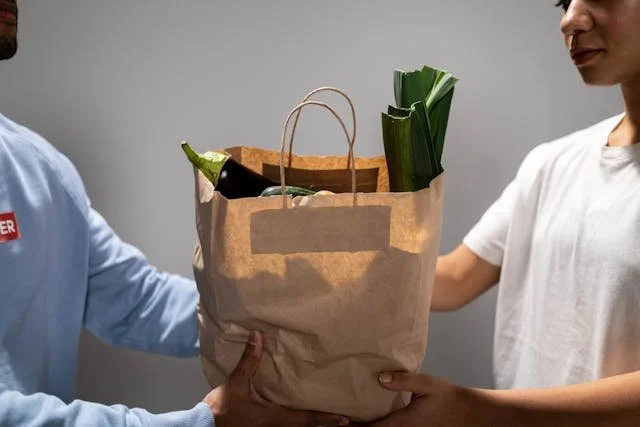The Ethical Food Rescue Movement: Transforming Waste into Hope Across America and Beyond
From California’s Silicon Valley to New York’s food deserts, Texas farms to Chicago food banks, the ethical food rescue movement is reshaping how communities address hunger and environmental sustainability. This comprehensive guide explores the nationwide initiatives transforming surplus food into hope.
Bottom Line: Ethical food rescue represents the deliberate, systematic effort to redirect safe, nutritious surplus food from waste streams to people experiencing hunger while maintaining dignity, environmental responsibility, and social justice principles. With 295 million people facing acute hunger globally in 2024, while 31% of food goes wasted in the U.S. alone, ethical food rescue has emerged as one of our most powerful weapons against both food insecurity and climate change.
What Ethical Food Rescue Means
Ethical food rescue goes beyond simply collecting surplus food. It’s the practice of collecting fresh, edible food that would have otherwise gone to waste from restaurants, grocers, and other food establishments and distributing it to local social service agencies while ensuring that every step of the process maintains the dignity of recipients, environmental sustainability, and equitable access to nutritious food.
The “ethical” component distinguishes this movement from traditional charity models by emphasizing:
Dignity and respect for food recipients
Quality over quantity — prioritizing nutritious, fresh foods
Environmental stewardship through waste reduction
Community empowerment through local networks
Systemic change rather than temporary relief
Origins and Growing Momentum
The modern food rescue movement began gaining traction in the 1990s with early pioneers like Food For Free, which emerged in Cambridge, Massachusetts almost 39 years ago and now rescues 1.3 million pounds of food annually. The movement received significant legal protection through the 1996 Emerson Good Samaritan Food Donation Act, which shields donors from liability lawsuits.
What started as grassroots volunteerism has evolved into a sophisticated, technology-enabled ecosystem. From college campuses to corporate boardrooms, food rescue has evolved from grassroots volunteerism into a robust, technology-enabled ecosystem, driven by growing awareness that food waste contributes 8% of total global greenhouse gas emissions.
Who’s Leading the Charge
Today’s food rescue ecosystem includes multiple types of leaders:
Major National Organizations:
Feeding America is the largest and most established food rescue organization in the country, rescuing 4 billion pounds of food annually in the U.S.
Food Rescue US rescued 38+ million pounds of food in 2023, providing over 31 million meals to the food insecure
ReFED acts as the data-driven strategist for the movement—tracking food waste trends, measuring emissions reductions, and guiding funding
Corporate Champions:
The December 2023 Food Rescue Convening brought together nearly 40 CEOs and social impact executives from food industry leaders including Walmart, Sam’s Club, The Kroger Company, Starbucks, Conagra Brands, General Mills, and Food Lion. Major corporate supporters now include:
General Mills and Starbucks — founding supporters of Feeding America’s Food Rescue Fund
Walmart — Feeding America’s largest food donor
Target, Cub Foods, Lunds & Byerlys — among the 500+ stores participating in rescue programs
Expanding Participation and Impact
The movement is scaling rapidly across multiple dimensions:
Technology Integration: Feeding America’s food donation platform, MealConnect recently hit a major milestone: it has helped facilitate six billion pounds of food rescue since its launch in 2014. Apps now match end-of-day produce with customers and charitable organizations in real-time.
Geographic Expansion: Sharing Excess completed its first international rescue in 2024, hinting at future global collaboration, while organizations operate in diverse models from direct-transfer systems to warehouse-based distribution networks.
Policy Support: Countries like France now require supermarkets to donate unsold food rather than discard it, while California requires surplus food donation to help feed Californians in need under its organics diversion laws.
Research-Based Statistics and Impact
The numbers reveal both the scale of the problem and the solution:
Global Context:
In 2024, more than 295 million people across 53 countries and territories experienced acute levels of hunger – an increase of 13.7 million from 2023
As many as 757 million people went hungry in 2023. That means one out of 11 people in the world had too little food for basic health
U.S. Waste and Rescue:
As of 2023, around 31% of all food went unsold or uneaten—approximately 74 million tons—representing an economic loss of $382 billion
Feeding America estimates that more than 50 million people turned to the charitable food system in 2023
Food waste accounts for 4% of U.S. greenhouse gas emissions and produces 58% of landfill methane emissions
Success Examples:
Harvard Square Meals Program: Every Thursday, they receive rescued food from Food For Free, which they use to prepare a healthy, three-course dinner for community members. Guests gather at communal tables to share the meal, and food that was not used for preparing the meal is distributed to attendees.
Milan’s Citywide Initiative: In October 2021, the city of Milan, Italy, won the Earthshot Prize for a citywide project to redistribute surplus food from supermarkets, restaurants, and companies.
Getting On Board: Individual and Corporate Action
For Individuals:
Volunteer with local food rescue organizations through apps that allow self-scheduling
Find your local food bank using Feeding America’s zip code tool
Reduce personal waste through meal planning and creative leftover use
Support businesses that participate in food recovery programs
Advocate for stronger federal nutrition programs and food rescue policies
For Companies:
Partner directly with Feeding America or Food Rescue US
Train staff on food safety protocols for donations
Implement technology to track and communicate surplus inventory
Receive benefits including tax deductions and liability protection under the Emerson Act
Individual Impact: A single volunteer can rescue hundreds of pounds of food monthly. Using our simple and efficient proprietary app, food donors register available fresh food, social service agencies communicate their food needs and details for delivery, and volunteers sign up for a “food rescue.”
Business Impact: In 2020, 38.5 million pounds of food were donated to Second Harvest Heartland from partners like Lunds & Byerlys, Cub Foods, Target, Walmart—more than 500 stores in total.
Government Action and Policy Landscape
The policy environment for food rescue has never been more supportive, driven by bipartisan recognition of both environmental and humanitarian benefits:
Federal Support:
The Biden administration announced $1 billion in additional funding for emergency food assistance by the USDA in 2024
The 2023 Food Donation Improvement Act expanded liability protections for food donors, addressing one of the largest barriers to participation
The U.S. goal to halve food waste by 2030 has galvanized stakeholders, backed by campaigns from the EPA and USDA
State-Level Innovation:
In 2024, the push to address food waste gained significant momentum as ongoing focus on sustainability, food security, and economic opportunity kept food waste policy at the forefront and offered an occasion for bipartisan collaboration. Key developments include:
California’s AB660: Standardized food date labeling using “BEST if Used By” for quality and “USE By” for safety, explicitly allowing food donation past quality dates
New York’s S05331: Expanded food donation requirements by lowering tonnage thresholds and extending distance requirements for organic waste recycling
Washington’s HB 2301: Provided grant funding for food rescue and recovery programs through the Center for Sustainable Food Management
Maine’s LD 1009: Banned food waste disposal in landfills, requiring donation as the first priority
Legislative Momentum:
The surge of legislative action in the second half of 2024 demonstrates a strong state-level commitment to tackling food waste through prevention, rescue, and recycling. However, 80% of proposed legislation remains pending, with progress often dependent on funding allocation and political priorities.
Current Challenges and Implementation Barriers
Despite growing support, significant obstacles remain:
Policy Implementation Gaps:
Thus far in 2024, 13 unique federal bills addressing domestic food waste are pending before Congress with none passed. Most of these bills were introduced to shape the Farm Bill, an omnibus piece of legislation which governs much of our food and agricultural systems and must be renewed every five years. The Farm Bill negotiations have been delayed due to increased partisanship and anticipation of elections.
Systemic Barriers:
Date Label Confusion: ReFED finds that confusion over date labels leads U.S. consumers to throw away about three billion pounds of food, worth $7 billion, every year
Liability Concerns: Despite federal protections, fear about liability remains one of the most cited barriers to food donation among manufacturers
Logistical Challenges: Legal and logistical barriers, coupled with the stigma around food donations, hinder the seamless flow of surplus food from producers to those experiencing food insecurity
Resource Constraints:
Limited funding for infrastructure development
Inadequate transportation networks for perishable foods
Insufficient staffing at food rescue organizations
High operational costs that strain nonprofit budgets
Quality Control Issues:
Traditional models often struggle with perishable foods, leading to nutritional inadequacy when only processed, shelf-stable items are rescued instead of fresh produce, dairy, and proteins that people need most.
Why This Matters Now
Food rescue addresses multiple crises simultaneously:
Climate Emergency: If food waste as a whole were a country, it would rank third in impact on global warming behind China and the United States. Every rescued meal prevents methane emissions from landfills.
Economic Justice: People facing hunger said they need an additional $24.73 per week in 2022, a 9.5% increase after adjusting for increased prices, while perfectly good food gets discarded.
Health Equity: Traditional food rescue models primarily rescue boxed and canned foods that are high in carbohydrates because they utilize warehouses and perishables spoil too quickly. Food Rescue US understands the importance of providing fresh, nutritious food.
The Impact of Non-Ethical Approaches
When food rescue lacks ethical frameworks, it can perpetuate problems:
Dumping mindset that treats recipients as disposal sites for unwanted food
Dignity erosion through poor-quality donations or demeaning distribution methods
Nutritional inadequacy when only processed, carbohydrate-heavy foods are rescued
Environmental harm when rescue operations increase transportation emissions without offsetting benefits
Ethical food rescue prioritizes recipient choice, nutritional value, and systemic change over simple disposal alternatives.
Global Impact Potential
By 2030, food rescue could be as normalized as recycling, driven by both policy and public support. The global potential is transformative:
Environmental: If scaled globally, food rescue could significantly reduce the 8% of greenhouse gas emissions from food waste while conserving water, land, and energy resources used in food production.
Social: With nearly 300 million people facing acute hunger globally, redirecting even a fraction of the 74 million tons wasted annually in the U.S. alone could provide billions of additional meals worldwide.
Economic: The $382 billion in annual food waste in the U.S. represents massive economic inefficiency that food rescue can help redirect toward productive use.
Your Next Steps: Simple and Achievable Actions
Start This Week:
Find your local food bank using Feeding America’s zip code tool
Download a food rescue app like Food Rescue Hero or Too Good To Go
Plan your meals to reduce household waste by 20%
This Month:
Volunteer for 2-4 hours with a local rescue organization
Contact local businesses to ask about their food donation programs
Support food rescue funding through donations to organizations like Feeding America’s Food Rescue Fund
Long-term Impact:
Advocate for policy changes in your community—contact representatives about pending food waste legislation
Educate others about the connection between food waste and hunger through social media and community presentations
Build networks with neighbors interested in community food security and local food rescue initiatives
Support businesses that participate in rescue programs and encourage others to join
Stay informed about local and federal policy developments affecting food rescue through ReFED’s Policy Finder
The ethical food rescue movement proves that we don’t have to choose between environmental protection and social justice—we can advance both simultaneously. From California’s innovative date labeling laws to New York’s expanded organic waste requirements, from Texas farms donating surplus produce to Illinois food banks receiving rescued meals, this movement spans every state and touches every community.
However, success requires continued advocacy to overcome implementation barriers. State action alone will not be enough—federal coordination, bipartisan support, and sustained funding are essential to achieve the 2030 goal of halving food waste while ensuring no one goes hungry.
Food rescue is no longer a niche activity—it’s a vital, growing movement that addresses hunger, waste, and climate change all at once. Every rescued meal represents hope, dignity, and proof that together, we can build a more just and sustainable food system for all.
Every action matters. Every meal rescued makes a difference. The time to join this movement is now.
Written by Justine Reichman




